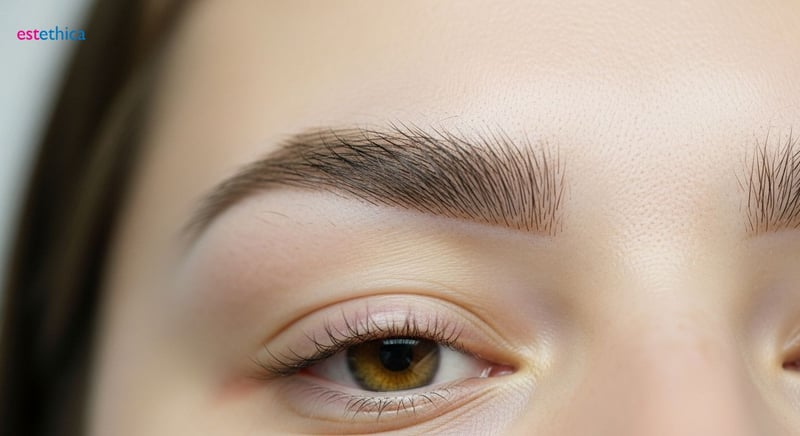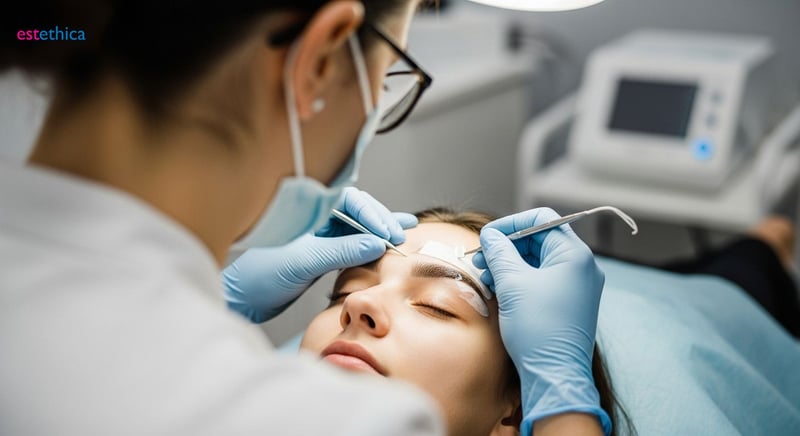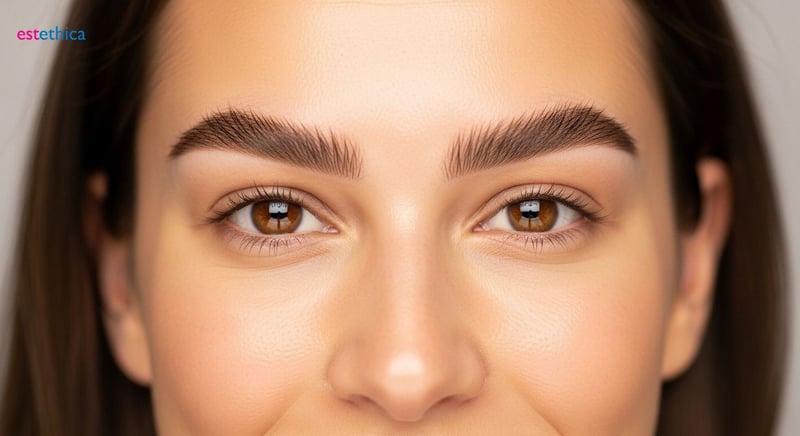Eyebrow Resurrection: The Art of Eyebrow Restoration
Discover the transformative power of eyebrow transplants to achieve naturally full and beautifully shaped eyebrows.
Eyebrow restoration has become a revolutionary procedure among individuals seeking to enhance their facial aesthetic. Whether it's due to aging, over-plucking, or genetic factors, eyebrow hair loss is a concern for many. Fortunately, modern techniques such as follicular unit extraction (FUE) offer a promising solution. In this article, we delve into the various aspects of eyebrow restoration, ensuring you understand every element involved in the art of eyebrow resurrection.
Decoding Eyebrow Restoration: What's the Real Deal?
Eyebrow Restoration Techniques and Considerations
Eyebrow restoration is transforming the field of cosmetic procedures, as more individuals seek to enhance their facial aesthetics through fuller, well-defined eyebrows. While microblading offers a temporary solution to achieve the desired look, eyebrow transplants provide a permanent alternative. An eyebrow transplant involves extracting hair follicles, usually from the back of the scalp, and carefully implanting them into the eyebrows. Achieving a natural appearance requires precision and artistry, ensuring each follicle is aligned to replicate genuine eyebrow growth patterns. According to the American Academy of Facial Plastic and Reconstructive Surgery, eyebrow transplants have seen a 15% increase in popularity over the last five years, reflecting a growing desire for lasting results.
Factors Influencing the Choice Between Microblading and Eyebrow Transplant
- Longevity: Eyebrow transplants offer a permanent solution compared to microblading, which requires regular touch-ups every 12-18 months.
- Natural Look: Transplanted eyebrows use real hair follicles, providing a more authentic and textured appearance than the simulated strokes of microblading.
- Cost-Effectiveness: Although eyebrow transplants have a higher upfront cost, they eliminate the recurring expenses associated with maintaining microbladed eyebrows over time.

Eyebrow Transplant: Achieving Natural-Looking Results
Hair Selection and Placement Techniques
Achieving natural-looking results from an eyebrow transplant requires skilled professionals. The procedure's success relies on the precision of follicle placement and the qualities of the hair used. Typically, softer hairs from the nape are preferred to blend seamlessly with the existing eyebrow hairs. At Esthetica Global, our surgeons meticulously select hair follicles based on thickness and texture to match your natural eyebrows. The angle and direction of each implanted hair are carefully considered to mimic natural growth patterns, ensuring a result that enhances your overall facial appearance. Studies show that clinics with specialized experience in eyebrow transplants have a 20% higher success rate in achieving satisfactory aesthetic outcomes.
Post-Procedure Growth and Maintenance
- Initial Recovery: Expect some swelling and redness immediately following the procedure, which typically subsides within a few days.
- Hair Growth: Patients can expect gradual growth over several months, achieving fullness typically by the end of the first year post-procedure. According to the International Society of Hair Restoration Surgery, most patients experience significant eyebrow hair growth within six months.
- Maintenance: Regular trimming may be necessary to maintain the desired shape and length of the transplanted eyebrows.

Follicular Unit Extraction for Eyebrows: A Modern Approach
Advantages of FUE in Eyebrow Restoration
Follicular Unit Extraction (FUE) offers distinct advantages in eyebrow restoration. This advanced method allows experts to extract individual hair follicles from the donor area, often the scalp, without the need for large incisions. The benefits include minimal scarring, faster recovery times, and increased precision in follicle placement. This precision is essential for creating natural-looking eyebrows that complement the individual’s facial features. According to a study in the Journal of Dermatological Treatment, patients who undergo FUE experience, on average, a 30% reduction in visible scarring compared to traditional strip methods.
Key Steps in the FUE Eyebrow Transplant Procedure
- Extraction: Individual hair follicles are carefully extracted from the donor area using a specialized micro-punch tool.
- Preparation: The extracted follicles are prepared under a microscope to ensure their viability and readiness for implantation.
- Implantation: The prepared follicles are precisely implanted into the eyebrow area, following the natural growth pattern and angle to achieve the desired density and shape of new eyebrow hair.
Factors Influencing the Cost of FUE Eyebrow Transplant
- Complexity: The complexity of the procedure influences the cost, depending on the number of grafts required and the intricacy of the desired eyebrow shape.
- Expertise: The surgeon's experience and specialization influence the cost, reflecting the precision and artistry required for natural-looking results in Esthetica Global procedures.
- Location: Geographical location plays a huge role on a clinic's pricing policy. Factors include, but are not limited to operational costs, competition in the area, regional demand.

Is an Eyebrow Transplant Permanent? Long-Term Expectations
Understanding the Longevity of Eyebrow Transplants
An eyebrow transplant is considered a permanent solution for enhancing or restoring eyebrow hair. However, it’s important to understand that while the transplanted follicles are permanent, they behave like natural hair and require ongoing maintenance. Like the hair on your head, transplanted eyebrows will continue to grow and may need regular trimming to maintain the desired shape and length. Factors such as individual hair growth cycles and hormonal changes can influence the texture and growth rate of the transplanted hair over time. Consistent care ensures the eyebrows maintain their aesthetic appeal, and consulting with professionals post-surgery will help tailor maintenance practices for the best long-term results.
Essential Post-Transplant Care for Sustained Results
- Regular Trimming: Transplanted eyebrow hairs continue to grow and may require trimming every few weeks to maintain the desired length and shape.
- Gentle Grooming: Use a soft brush or comb to groom the eyebrows daily, encouraging proper alignment and preventing tangling.
- Moisturizing: Keep the skin around the transplanted area moisturized to promote healthy hair growth and prevent dryness.
Maintaining Your Investment: Factors That Influence Long-Term Satisfaction
- Proper Technique: When executed with care, hair restoration can yield amazing results.
- Commitment to upkeep: Post-op care is an important detail to consider when wanting long-lasting results.
- Trust in Expertise: Looking for a clinic with years of experience in the field will provide the support necessary for answering any long-term concerns.
Transform Your Look with Eyebrow Transplant: A Complete Guide
FUE Eyebrow Restoration Ensures Natural-Looking Results with Minimally Invasive Techniques
Comprehensive Post-Transplant Care Ensures Sustained Eyebrow Restoration Results at Esthetica Global
Frequently Asked Questions
What is eyebrow restoration and how does it differ from microblading?
How is follicular unit extraction (FUE) used in eyebrow transplants?
How long do the results of an eyebrow transplant last, and what maintenance is required?
What factors contribute to achieving natural-looking results with an eyebrow transplant?
What are the key benefits of choosing an eyebrow restoration procedure?
Achieve your aesthetic goals with estethica's personalized treatments and expert care!
📞 Get Your Free Consultation!